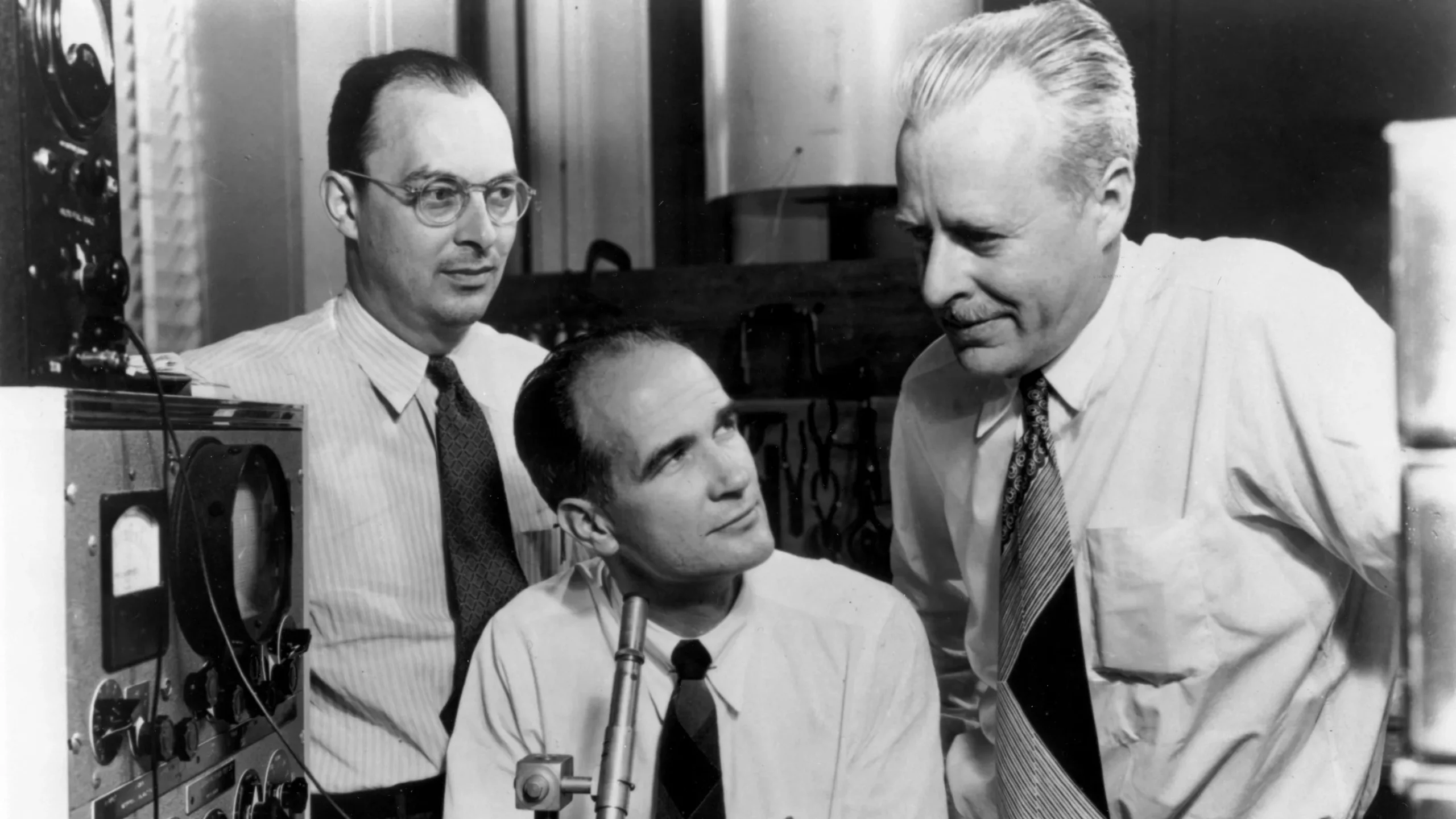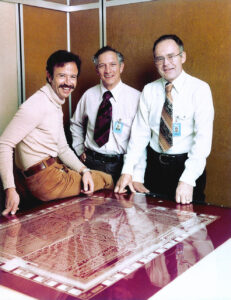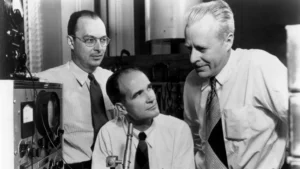Introduction:
The semiconductor industry’s journey stands as a testament to human ingenuity, driving the relentless march of technological progress that has transformed every aspect of modern life. From the humble beginnings of the transistor to the era of ultra-miniaturized integrated circuits, this blog post embarks on a journey through the fascinating history of the semiconductor revolution.
Follow us on LinkedIn for everything around Semiconductors & AI
9 Waves of Semiconductor Industry’s Journey
1. Early Developments (1940s-1950s):
- The discovery of the transistor at Bell Labs in 1947 by John Bardeen, Walter Brattain, and William Shockley marked a pivotal moment in electronics.
- Transistors replaced bulky and unreliable vacuum tubes, leading to smaller, more reliable electronic devices.
- Shockley Semiconductor Laboratory, founded by William Shockley in 1956, was one of the earliest semiconductor companies, although it faced challenges due to management issues and eventually led to the departure of several key employees who went on to found other semiconductor companies.
Read More: Who invented Transistor, Really??
2. Silicon Era (1950s-1970s):
- Silicon emerged as the dominant semiconductor material due to its abundance, stability, and controllable electrical properties.
- Texas Instruments introduced the first commercial silicon transistor in 1954, followed by Fairchild Semiconductor in 1958.
- Fairchild Semiconductor, founded by the “Traitorous Eight” (former Shockley employees), became a breeding ground for innovation and entrepreneurship, spawning numerous spin-off companies and pioneering the development of integrated circuits.
Read More: 10 Pivotal Milestones in Semiconductor History
3. Integrated Circuits (1960s):
- Jack Kilby of Texas Instruments and Robert Noyce of Fairchild Semiconductor independently invented the integrated circuit in the early 1960s.
- Kilby’s approach involved creating a miniaturized circuit on a single piece of semiconductor material. Noyce’s method involved fabricating the circuit on a silicon wafer using a planar process, which became the standard.
- The integration of multiple transistors and other components onto a single chip revolutionized electronics, enabling the production of smaller, lighter, and more powerful devices.
Read More: Happy 65th Birthday, Integrated Circuit! Thank You, Jack Kilby
4. Moore’s Law (1965):
- Gordon Moore, co-founder of Intel, observed in 1965 that the number of transistors on a microchip was doubling approximately every two years.
- Moore’s Law became a guiding principle for the semiconductor industry, driving continuous innovation in transistor scaling, miniaturization, and cost reduction.
Read More: Why Moore’s law is not a law?
5. Microprocessor Revolution (1970s-1980s):
- Intel introduced the first microprocessor, the 4004, in 1971, followed by the 8008, 8080, and eventually the x86 architecture.
- Microprocessors integrated the central processing unit (CPU) onto a single chip, laying the foundation for the personal computing revolution.
- Other semiconductor companies, such as Motorola and Zilog, also contributed to the development of microprocessors and embedded systems.
Read More: How Intel won the race to develop first microprocessor
6. Expansion and Diversification (1980s-1990s):
- The 1980s witnessed the rise of dedicated semiconductor foundries, such as TSMC, which specialized in contract manufacturing of ICs for other companies.
- Advancements in semiconductor design tools, process technology, and packaging techniques fueled rapid innovation and product diversification.
- Emerging applications in telecommunications, consumer electronics, and industrial automation drove demand for specialized ICs and system-on-chip (SoC) solutions.
Read More: How the US Lost Its Silicon Edge to Taiwan in 3rd Chip war
7. Globalization and Consolidation (1990s-2000s):
- The semiconductor industry underwent globalization, with manufacturing facilities and design centers established in various regions worldwide.
- Mergers, acquisitions, and strategic partnerships reshaped the competitive landscape, leading to the consolidation of semiconductor companies and the emergence of industry giants like Intel, Samsung, TSMC, and Qualcomm.
- The rise of fabless semiconductor companies, which focus on design and innovation while outsourcing manufacturing, became a prominent trend.
Read More: The Chip War: Most important book of our times
8. Mobile and Internet Age (2000s-Present):
- The proliferation of smartphones, tablets, and mobile devices drove demand for high-performance, low-power semiconductor chips, including application processors, memory, and wireless connectivity solutions.
- The internet of things (IoT) revolutionized industries such as healthcare, automotive, and smart home technology, driving the need for sensor ICs, microcontrollers, and connectivity solutions.
- Advances in artificial intelligence (AI), machine learning, and data analytics fueled demand for specialized semiconductor chips optimized for processing, inference, and training tasks.
Read More: Bankruptcy to Trillion-Dollar Company: Story of Nvidia
9. Challenges and Opportunities (Present and Future):
- The semiconductor industry faces challenges such as technological barriers to further transistor scaling, geopolitical tensions affecting global supply chains, and environmental concerns related to manufacturing processes.
- However, opportunities abound in emerging markets such as 5G telecommunications, autonomous vehicles, renewable energy, and edge computing.
- Continued investment in research and development, collaboration across the ecosystem, and innovation in materials, design, and manufacturing processes are key to addressing challenges and seizing opportunities in the dynamic semiconductor industry.
Read More: 6 Emerging Trends in Semiconductor Technologies in 2024
Conclusion:
The semiconductor industry’s journey is a saga of innovation, collaboration, and fierce competition. From the invention of the transistor to the era of ultra-miniaturized chips, the industry has continually pushed the boundaries of what’s possible, shaping the modern world in profound ways.



